'Keep Track' visualizes the orbits of satellites orbiting the Earth in 3D

Satellites launched from all over the world travel back and forth in Earth's orbit, and according to data from the satellite tracker service CelesTrak , there are 10,345 active satellites as of September 6, 2024. Keep Track visualizes the classification, current location, and orbit of a large number of satellites in 3D, allowing you to visually understand how many satellites there are, as well as check where the satellite you're looking for is currently and how it's moving.
Keep Track - 3D Satellite Toolkit
https://app.keeptrack.space/
KeepTrack - Home
https://keeptrack.space/
Keep Track can be accessed for free from your browser. When you open Keep Track, it takes a few seconds to load.

Below is the screen of Keep Track. The countless dots around the Earth show more than 37,000 satellites, both active and inactive.
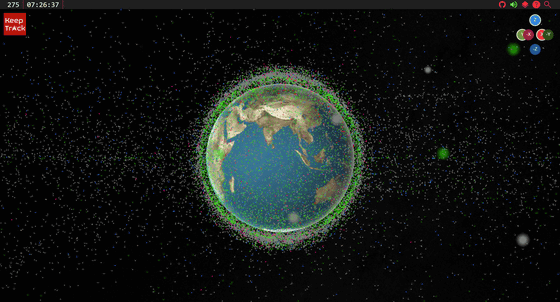
When you place your mouse over a point, it will show you what type of satellite each point is.
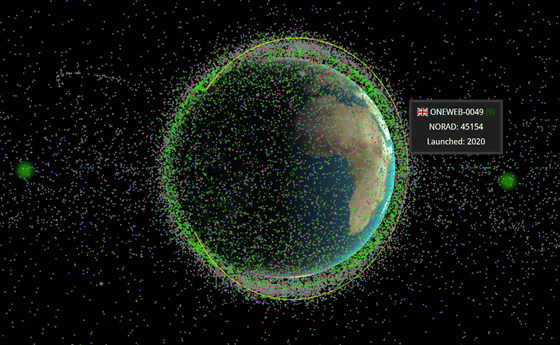
You can zoom in and out by scrolling. If you zoom out, you can see that the satellite network extends quite far from the Earth.

You can also rotate the Earth by dragging the mouse or moving the X/Y/Z axis icons in the upper right. When I tried looking at Japan, it was around 5 p.m. at the time of writing the article, so the sun was setting and it was faintly in shadow. In this way, Keep Track can check where and what kind of satellites are flying on the Earth in real time.
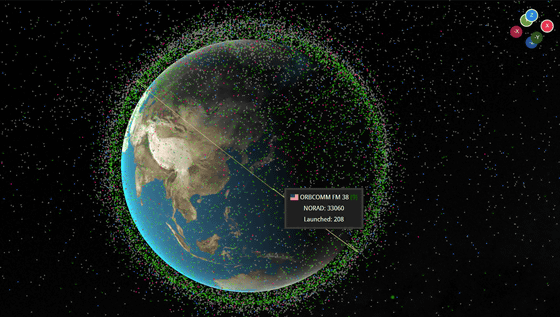
The time is displayed in Universal Time in the upper left corner, but by clicking on this time, you can go back to any date and time and see 'how the satellite was flying at this time on this day.'
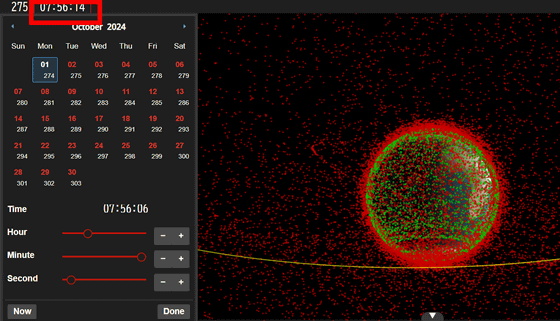
We expanded even further and looked at the artificial satellites in the sky above Japan at the time of writing. The one flying over the Kanto region was SpaceX's satellite internet 'Starlink' model number 4212.

Click on a satellite to see more detailed information.
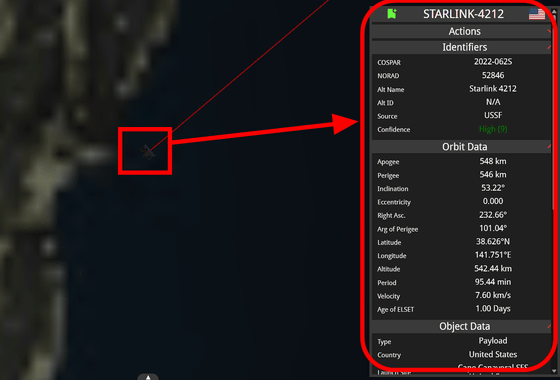
Clicking the triangle icon at the bottom of the Keep Track screen will reveal a more detailed menu.
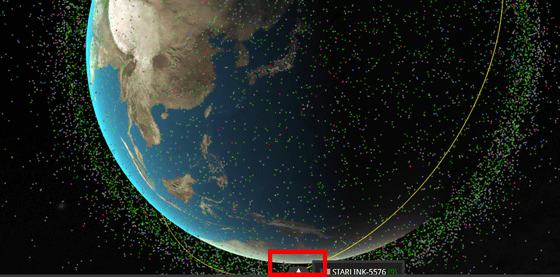
By clicking 'Sensors', you can narrow down the satellites by the facilities or organizations that manage them.
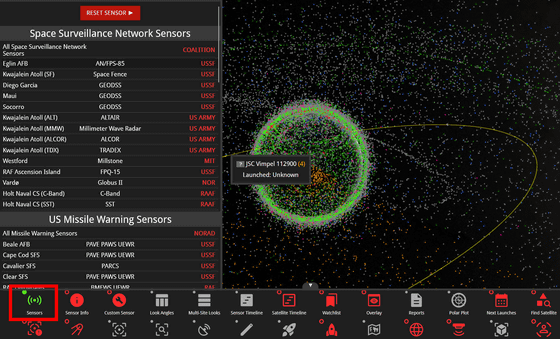
From 'Sensor Info,' you can view details of the facilities and organizations you have narrowed down. The image below shows the details of
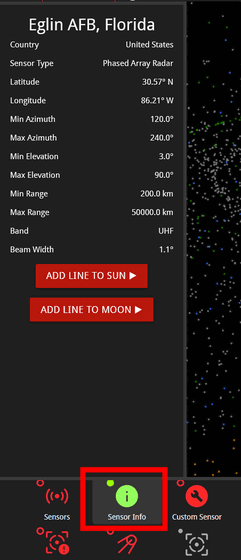
By selecting any satellite and clicking 'Take Photo,' you can download an image of the selected satellite moving in Earth orbit.
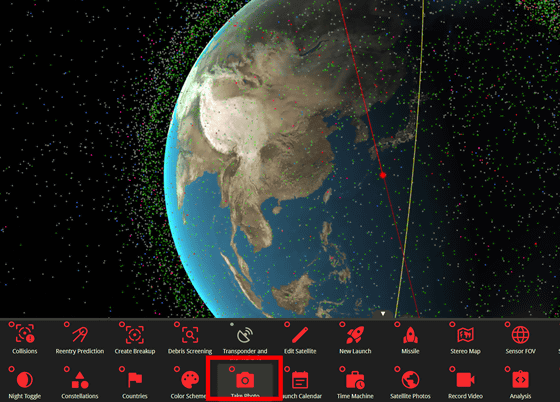
The downloaded image is below. Since only the selected satellites are displayed, it is clear and easy to see.
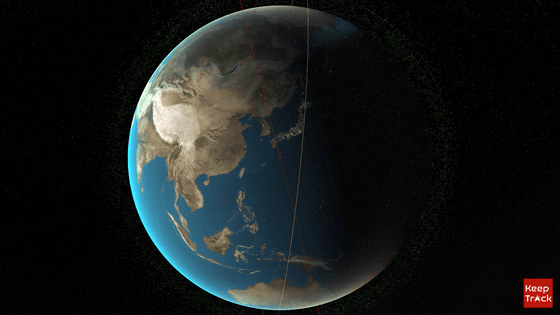
You can narrow down your search for any satellite by clicking on 'Find Satellite.' In the search box on the left, change 'County' to 'Japan.'
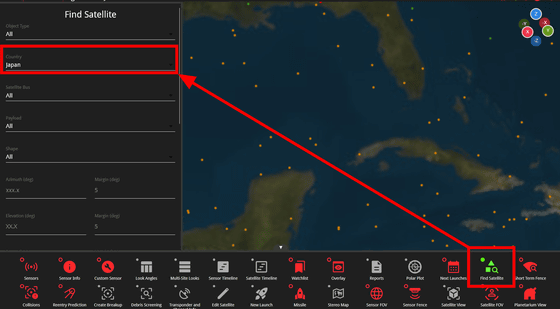
Click 'FIND SATTELLITE(S)'.
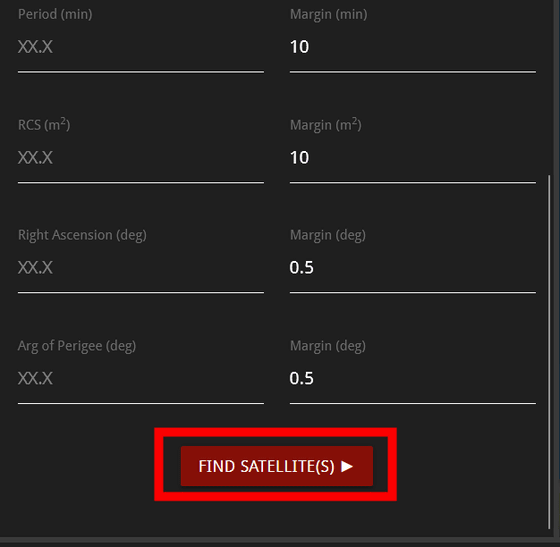
Only Japanese satellites are lined up in Earth orbit, and a list of their names is displayed on the right.
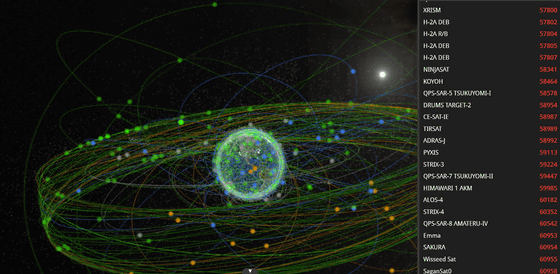
Among the Japanese satellites, we discovered the ultra-small satellite '
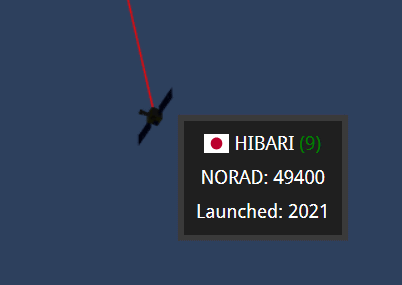
You can also change the color of only specific satellites. SpaceX's satellite internet 'Starlink' has launched many satellites into orbit to expand and strengthen its services, and CEO Elon Musk announced on September 6, 2024 that '
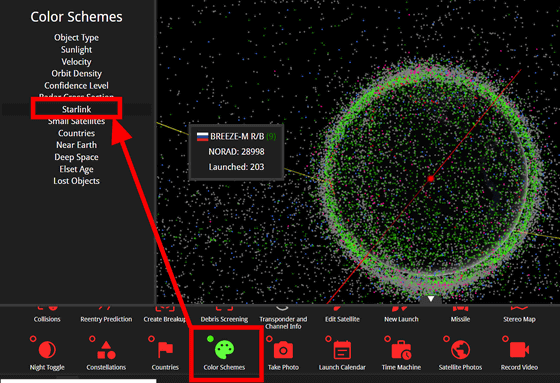
In the image below, green is Starlink and red is other artificial satellites. All the other red artificial satellites are located far from the Earth, but you can see that the green Starlink is flying close to the Earth, covering the surface of the Earth.
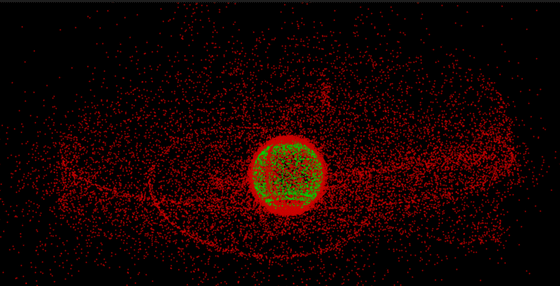
Another major feature of Keep Track is that it has a 'satellite destruction simulation.' Select any satellite, select 'Create Breakup' from the menu, and click 'CREATE BREAKUP' in the window displayed on the left.
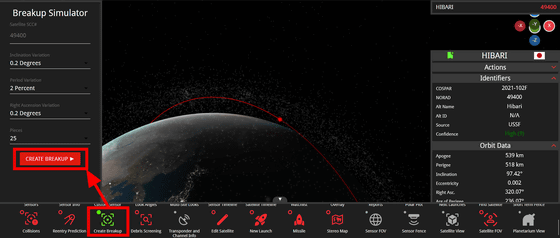
The user can then see a simulation of how the selected satellite will break down into the specified number of pieces and then move in orbit. Keep Track's mission is to map the orbits of satellites to help guide new launches, as well as to solve the space debris problem of used satellites.
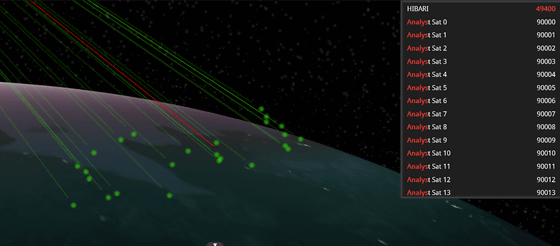
The official website also allows you to see the state of space debris in Earth orbit. The image below is an example, and it is clear that there is so much debris that the Earth is obscured by the lines showing its orbit.
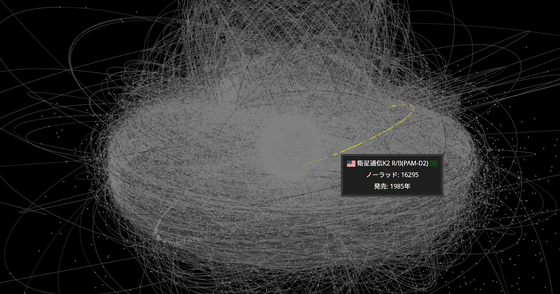
Keep Track is open source software and can be found on GitHub.

Related Posts:
in Review, Software, Web Service, Science, Posted by log1e_dh







